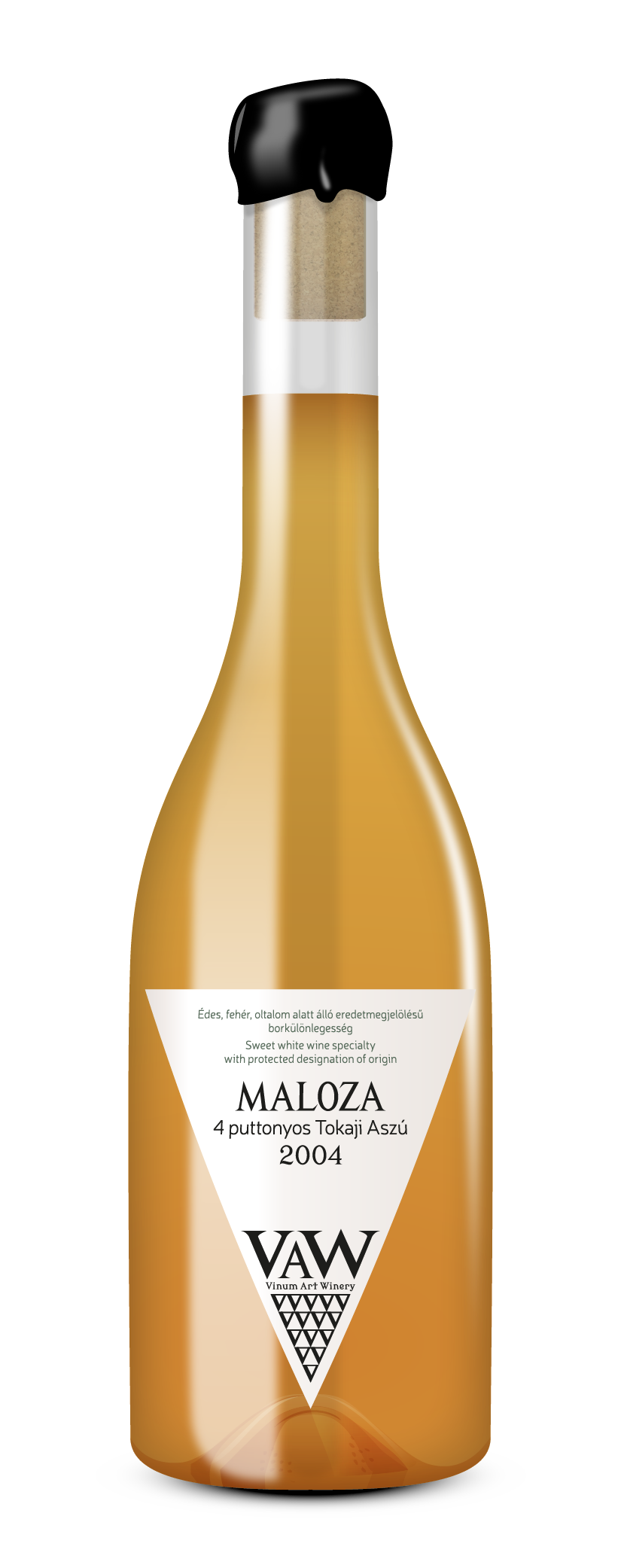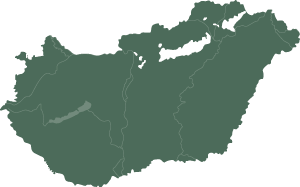Personal opinion:
It owes its rather complex taste to its age.
It is a pithy wine with a high level of harmony. The high sugar content is well compensated by the well-proportioned acidity which makes this wine truly exciting.
Its taste is nutty and honeyed – it is clear that it’s not a young wine.
If we do not intend it for collection, I recommend decanting it.
While it contains a world of taste, it is suggested by both its age and colour that we have a serious senior at hand.
I recommend this wine for those enjoying wine specialities.
It is masculine, the wine of kings.
Gastronomical pairing:
Also in the case of this wine I can only say that it is best consumed on its own as the aszú wine is a special dessert in itself.
About the Tokaji Aszú variety:
The Tokaji aszú or aszú is an aszú wine produced in the Tokaj-hegyalja wine region – that is a dessert wine, a wine specialty made by using botrytised or “nobly” rotten grapes. It is the most famous of the Tokaj wines. It is produced by using a century-old technology, the basis of which is the late harvest of botrytised grapes and the subsequent wine-making process. Aszú wines sweeter than the 6 puttonyos or 6-butt wines (This is referring to the number of vintage baskets of noble rot-affected grapes added to barrels of dry wine. This term is used to denote sugar level in sweet dessert wine.) are called Tokaji eszencia (essence) which is the most distinguished of the aszú wines.
Botrytisation or “noble” rotting is caused by the Botrytis cinerea necrotrophic fungus in case of the favourable appulse of other factors (climate, varieties etc.), which occurs here year after year.
Aszú berries are individually picked, that is how the harvest starts: the botrytised berries are picked from the clusters. In former times the berries were collected in wooden baskets, crushed, then combined in a vat with 136.6 litre of must or wine of the same year. Then they let the fruit soak for 1-1.5 days (so that the sugar, acid and taste content of the aszú berries are released), then the so called aszú dough is pressed and the must is racked off into barrels for the fermentation to be completed. The 136.6 litre is the volume of a Gönc cask. The concentration of the aszú was traditionally defined by the number of butts (puttonys) of aszú that was soaked in a Gönc cask of wine. (3, 4, 5, 6 butt - puttonyos). Before the wine law, aszú wines had to be matured for a minimum of as many years as the number of butts (puttonys) they carried, and therefore, they were up for sale with a delay of 3-6 years. According to the current regulation, it has to be matured for at last three years – of which two has to be in a wooden barrel – before it is put on the market. Nowadays it is not measured with a butt (puttony) and a Gönc cask but the method is the same. The aszú is matured in the wooden barrels placed in the, often, many hundred metres long labyrinth of cellars carved out of the rhyolite tuffs.
According to old records, the making of the aszú wine was invented by Máté Szepsi Laczkó, the court cleric of Zsuzsanna Lorántffy and later the preacher of Erdőbénye, who made the first aszú wine from the harvest of the Oremus variety in Sátoraljaújhely of the princess, and who surprised her with it as an Easter wine. The authenticity of this historical data is confirmed by the records of Ferenc Kazinczy in which he named Péter Kazinczy, the land steward of the princess, as the source of the above historical data.
The Tokaji aszú became world famous in the 18th century. Louis XIV called it “the king of wines, the wine of kings”.
The region and its history:
It cannot be established with surety today who originally planted the southern slopes of the Tokaj region (Hegyalja) with vine. It is, however, certain, that there was viniculture here already before the settlement of the Magyars in Hungary.
After the invasion of the Tatars (1241-1242) Béla IV invited Italian grape-growers into the country who settled in Olaszi (Bodrogolaszi), Sárospatak and Liszka (Olaszliszka). They, the Italian viniculturists, were the ones who laid the basis of international fame for the wine region, bringing with them the varieties of their homeland located more to the south. It is also a proven fact that the most illustrious variety in Tokaj, the Furmint, is also of Latin or Italian origin („mea nec Falernae temperant vites, neque Formiani pocula colles” [Horatius]).
The name Tokaj-Hegyalja came from the town of Tokaj and from the surrounding region originally only named Hegyalja (“piedmont”). The Hungarian name ‘Hegyalja’ was already in use in the 16th century. The Latin name of the region, Districtus Submontaneus or “Piedmont region” also appeared later as a public administration title.
The Tokaj castle was known all over Europe in the 16th-17th centuries, so foreign wine merchants looked for “Tokaj wine” in the entire “Hegyalja” region and the region became known all over Europe as “Tokaj’s highland” (in Latin: Montium vitiferorum Tokaiensis, in German: Tokayer Gebürg or Tokajer Wein-Gebürg). This was slowly neutralized also in the Hungarian parlance, and the area was called “Tokaj-Hegyaljának” from the 18th century onwards, besides the official “Hegyalja” name. The latter was only replaced officially by the name “Tokaj-Hegyalja” from the early 20th century.
It is an old saying that the Tokaj wine is the king of wines and the wine of kings. This divine wine speciality truly is the most distinguished of the premier Hungarian varieties, and it is also a fact that several royalties had the bottled Tokaj wine on their table. Not only royalties, however, but also the uncrowned monarchs of the arts.
(e.g.: Mozart, Goethe, Schubert, Baumberg, Rossini).
Climate and geography:
The Tokaj wine region is situated in an 87-kilometre long and 3-4-kilometre wide area of 5500 hectares, in a triangle bordered by three characteristic hills, that of Abaújszántó, the Sátor-hill of Sátoraljaújhely, and Tokaj’s Kopasz-hegy, bordered by 28 settlements.
The Tokaj wine region has a continental climate. In most places there is volcanic base-soil (andesite, rhyolite, and the tuffs of these), and black soil, rich in humidity, that evolved on this. On the volcanic rock, rich in minerals, full-bodied wines with vivid acids and mineral notes can be produced.
Because of the lower acid content, parts with yellow soil (e.g. the Kopasz-hill) are favourable for wines of a softer character; these slopes are more suitable for growing more fragrant varieties.
Botrytis cinerea – that causes the aszú process or noble rot – is not only characteristic of Tokaj-Hegyalja, but can also be found in other wine regions (Arad-hegyalja, Mór). However, due to the combination of the production site, the special micro-climate, the surrounding rivers (Bodrog, Tisza) and the right wine variety (Furmint, Hárslevelű or “Linden leaf”, Muscatel, Zeta, Kövérszőlő or “Fat grape”, Kabar) the aszú process occurs here, year after year. A characteristic feature of the cellar system of the wine region that is carved out of rhyolite tuff is the noble mould, Cladosporium cellare, covering the walls in a thick layer. W This is only found here and in the Rhein wine cellars, in the world. This fungus plays an important role in ensuring the quality of Tokaj wines.
NAME: MALOZA
YEAR: 2004
VARIETY: Tokaji Aszú
DISTRICT: Tokaj
CLASS: 4 puttonyos (4-butt) Sweet white wine speciality with protected designation of origin
Product of Hungary
Bottle volume: 500ml
Alc.11,5%vol
Contains sulphites
vinum regum rex vinorum


